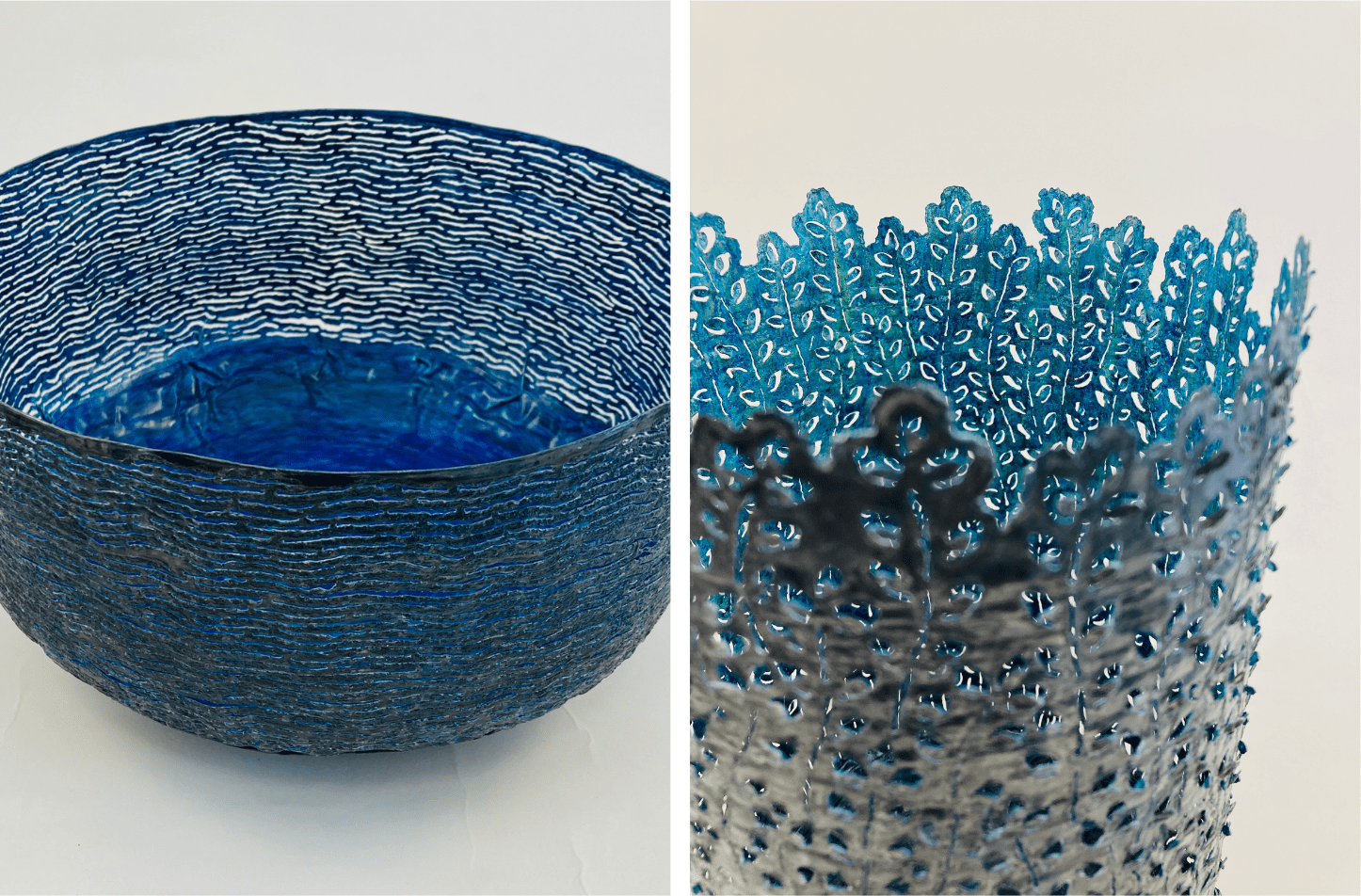
Stunning new works from our Metal artist, Claire Malet.

These new pieces are inspired by growth, by natural forms, textures and colours and by ideas about transformation and renewal. Each piece is made from a single steel food can (tin can). Each vessel is worked with hand tools and heat to form the shape and texture. The perforations are cut free hand with a flame. The interiors are hand coloured with watercolours and pencil, sealed with lacquer and wax. The exteriors are filed, sanded and lacquered and waxed.

Metalsmith Claire Malet finds her inspiration in natural forms and landscapes, and in the exploration of the relationship between the metals with which she works and the environment from which they are sourced. Through her on-going work with ‘found’ metal cans, she is exploring ideas of production, transformation, renewal through decay and reuse. She is also interested in perceived value; taking a throw-away, manmade, mass-produced food-can, Malet ‘transforms’ it into a ‘precious’ vessel.
In contrast, when working in silver, Malet makes pieces which focus on vessels and objects discarded by nature: a curl of split bark, a seed pod. In doing so, she makes pieces which transform and draw attention to the value of a ‘throw-away’ object from nature.

The idea for the hanging piece came after a visit by Malet to the fine Victorian hot house at Birmingham Botanical Gardens, where there is a collection of pitcher plants. These fascinating and strange plants, set against the riveted wrought iron structure caught her attention.
The Latin name for the tropical pitcher plant, 'Nepthenes', was chosen by Linnaeus in 1737 when he compiled his Hortus Cliffortianus and is taken from Homer's Odyssey. 'Nepthene' literally means 'without grief' (ne=not, penthos = grief) and, in Greek mythology, is a drug that quells all sorrows with forgetfulness. Malet wanted to create a piece inspired by the Nepthenes plants, their strange other-worldliness and ability, to take the mind drifting happily elsewhere, or to entice the unwary into a sweet trap.
Each 'pitcher' has been formed on wood to create a natural texture, then soldered, riveted, further textured and burnished. They hook simply onto forged and oxidised iron tendrils; the soft finish and pearly light of the fine silver contrasts with the dark lines of the iron tendrils.


DISCOVER MORE METAL AT CONTEMPORARY APPLIED ARTS

Junko Mori, Ane Christensen & Sheng Zhang.






